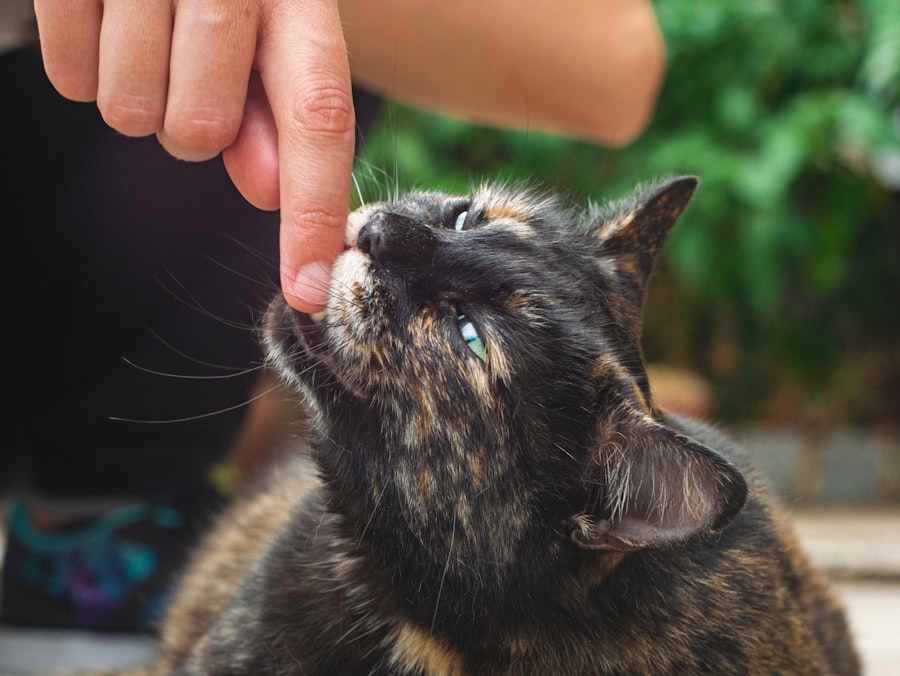Cats are fascinating creatures, each with their own unique personalities and quirks. However, despite their independent nature, they have fundamental needs that must be met to ensure their well-being. Understanding these basic needs is the first step in providing a happy and healthy life for your feline friend.
Cats require a balanced diet, regular veterinary care, mental stimulation, and social interaction. Each of these elements plays a crucial role in their overall health and happiness. A balanced diet is essential for your cat’s physical health.
Cats are obligate carnivores, meaning they require a diet rich in animal protein. It’s important to choose high-quality cat food that meets their nutritional needs, taking into account their age, weight, and activity level. Regular veterinary check-ups are also vital; they help catch any potential health issues early on and ensure your cat is up-to-date on vaccinations.
Additionally, providing mental stimulation through play and interaction can prevent behavioral issues and keep your cat engaged and happy.
Key Takeaways
- Cats have basic needs for food, water, shelter, and a clean litter box, as well as social interaction and mental stimulation.
- Creating a comfortable living environment for your cat involves providing cozy resting spots, scratching posts, and interactive toys.
- Feeding and nutrition tips for your cat include offering a balanced diet, providing fresh water, and monitoring portion sizes to prevent obesity.
- Grooming and hygiene practices for your cat include regular brushing, nail trimming, and dental care to keep them healthy and clean.
- Understanding your cat’s behavior and communication involves recognizing their body language, vocalizations, and social interactions with other cats and humans.
Creating a Comfortable Living Environment for Your Cat
Creating a comfortable living environment for your cat is essential for their well-being. Cats are territorial animals that thrive in spaces where they feel safe and secure. This means providing them with cozy spots to rest, such as soft beds or blankets, as well as vertical spaces like cat trees or shelves where they can perch and observe their surroundings.
A well-structured environment allows your cat to express their natural behaviors, such as climbing, scratching, and hiding. Moreover, it’s important to consider the layout of your home. Cats appreciate having access to various areas where they can explore and play.
Ensure that there are plenty of hiding spots and safe retreats where they can escape if they feel overwhelmed. Additionally, keeping their litter box clean and placing it in a quiet, accessible location will contribute to their comfort and happiness. A well-thought-out living space can significantly enhance your cat’s quality of life.
Feeding and Nutrition Tips for Your Cat
Feeding your cat a nutritious diet is one of the most important aspects of responsible pet ownership. Cats require a diet that is high in protein and low in carbohydrates. When selecting cat food, look for products that list meat as the first ingredient and avoid those with fillers like corn or soy.
It’s also essential to consider your cat’s life stage; kittens have different nutritional needs than adult or senior cats. Consulting with your veterinarian can help you determine the best diet for your feline companion. In addition to choosing the right food, portion control is crucial.
Obesity is a common issue among cats, leading to various health problems such as diabetes and joint issues. Measure out your cat’s food according to the guidelines provided on the packaging or by your vet. Additionally, consider incorporating wet food into their diet, as it can provide hydration and is often more palatable for cats.
Remember to always provide fresh water and monitor their eating habits to ensure they are maintaining a healthy weight.
Grooming and Hygiene Practices for Your Cat
| Practice | Frequency |
|---|---|
| Bathing | Every 4-6 weeks |
| Brushing | 2-3 times a week |
| Nail trimming | Every 2-4 weeks |
| Ear cleaning | Once a month |
| Teeth brushing | 2-3 times a week |
Grooming is an essential aspect of cat care that goes beyond just keeping them looking good; it also plays a significant role in their health and hygiene. Regular brushing helps reduce shedding and prevents matting, especially in long-haired breeds. It also provides an opportunity to check for any skin issues or parasites that may need attention.
Depending on your cat’s coat type, you may need to brush them daily or weekly. In addition to brushing, regular nail trimming is important to prevent overgrowth and potential injury. Cats naturally wear down their claws through scratching, but indoor cats may need assistance in this area.
Bathing is generally not necessary for cats unless they get into something particularly messy; however, if you do need to bathe your cat, use a gentle cat-specific shampoo. Maintaining proper grooming habits not only keeps your cat looking their best but also contributes to their overall health.
Understanding Your Cat’s Behavior and Communication
Understanding your cat’s behavior and communication is key to building a strong bond with them. Cats communicate through body language, vocalizations, and even scent marking. For instance, a relaxed cat will have a loose body posture, while an agitated cat may puff up its fur or swat at perceived threats.
Paying attention to these signals can help you respond appropriately to your cat’s needs and emotions. Vocalizations also play a significant role in how cats communicate with their owners. While some cats are more vocal than others, each sound can convey different meanings.
A soft purr often indicates contentment, while a loud meow may signal hunger or a desire for attention. By learning to interpret these sounds alongside their body language, you can better understand what your cat is trying to communicate and respond accordingly.
Providing Mental and Physical Stimulation for Your Cat
Cats are intelligent creatures that require both mental and physical stimulation to thrive. Boredom can lead to destructive behaviors such as scratching furniture or excessive meowing. To keep your feline friend engaged, provide a variety of toys that encourage play and exploration.
Interactive toys that dispense treats or require problem-solving can be particularly beneficial in stimulating their minds. Physical activity is equally important for maintaining your cat’s health. Regular playtime not only helps them burn off excess energy but also strengthens the bond between you and your pet.
Engage in interactive play sessions using feather wands or laser pointers to encourage your cat to chase and pounce. Additionally, consider creating an enriching environment with climbing structures or puzzle feeders that challenge them mentally while promoting physical activity.
Health and Veterinary Care for Your Cat
Regular health check-ups are crucial for ensuring your cat remains healthy throughout their life. Routine veterinary visits allow for early detection of potential health issues and ensure that vaccinations are up-to-date. Discussing preventive care options with your veterinarian can help you make informed decisions about your cat’s health needs.
In addition to routine check-ups, it’s essential to monitor your cat’s behavior at home for any signs of illness or discomfort. Changes in appetite, litter box habits, or energy levels can indicate underlying health problems that may require veterinary attention. Being proactive about your cat’s health will not only enhance their quality of life but also provide peace of mind for you as a pet owner.
Tips for Bonding and Building a Strong Relationship with Your Cat
Building a strong relationship with your cat takes time, patience, and understanding. One of the best ways to bond with your feline friend is through consistent interaction and playtime. Set aside dedicated time each day to engage with your cat through play or simply sitting together while you read or watch TV.
This quality time fosters trust and helps strengthen your connection. Additionally, respecting your cat’s boundaries is crucial in building a positive relationship. Cats are naturally independent animals that may not always want attention or affection on demand.
Allow them to approach you when they feel comfortable, and avoid forcing interactions if they seem disinterested or agitated. By creating a safe space where they feel secure, you will encourage them to seek out your companionship willingly. In conclusion, understanding and meeting your cat’s basic needs is essential for ensuring their happiness and well-being.
From creating a comfortable living environment to providing proper nutrition and healthcare, every aspect of cat care contributes to a fulfilling life for your feline companion. By investing time in understanding their behavior and building a strong bond through love and patience, you will create a lasting relationship that enriches both your lives. At Lovepetcare, we understand the importance of providing exceptional care for pets in Los Angeles and New York City.
Our professional dog walkers and pet sitters are dedicated to ensuring that every pet receives the love and attention they deserve while you’re away. Whether you need assistance with daily walks or overnight pet sitting services, Lovepetcare is here to help you maintain the happiness and well-being of your beloved pets!

























